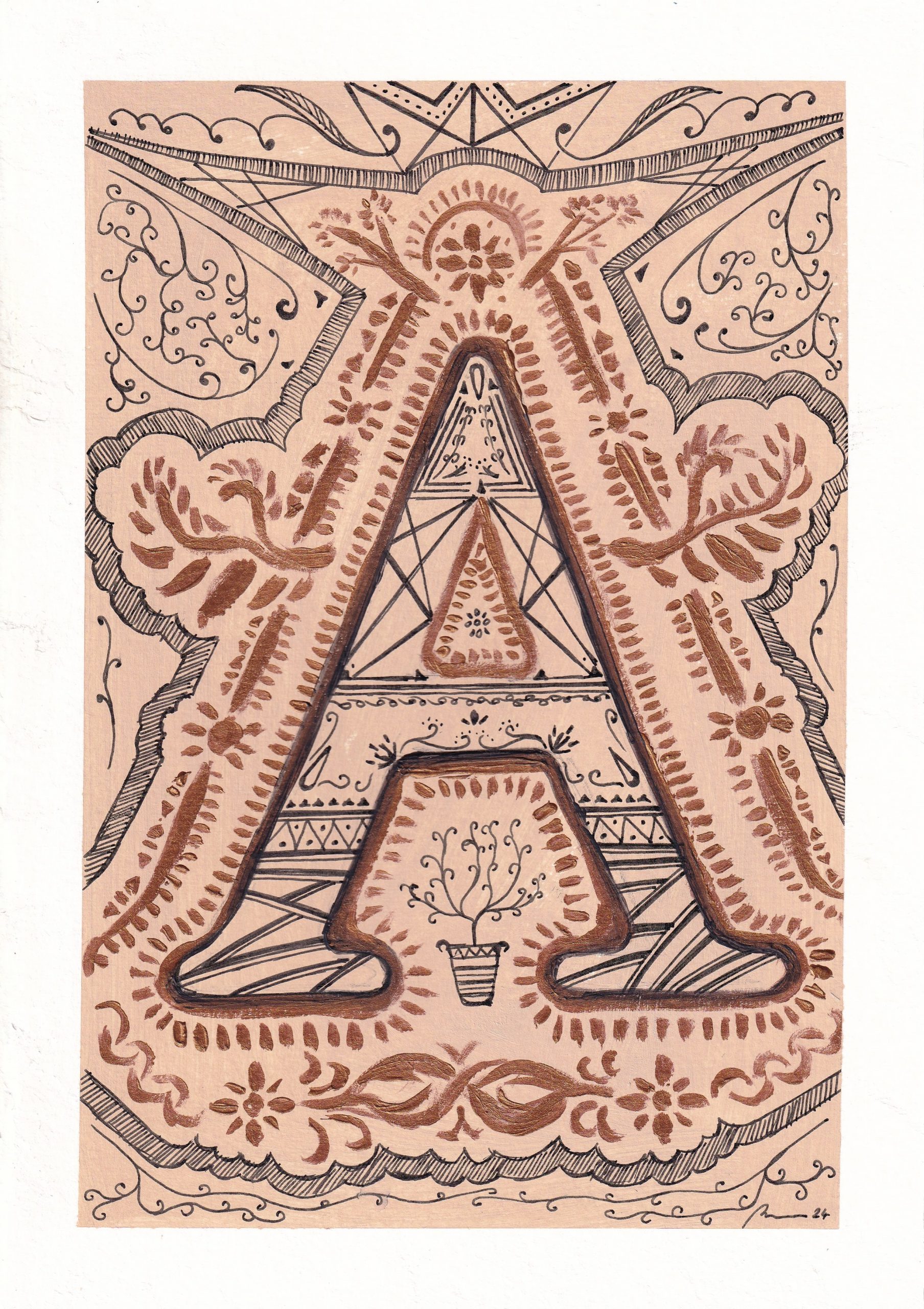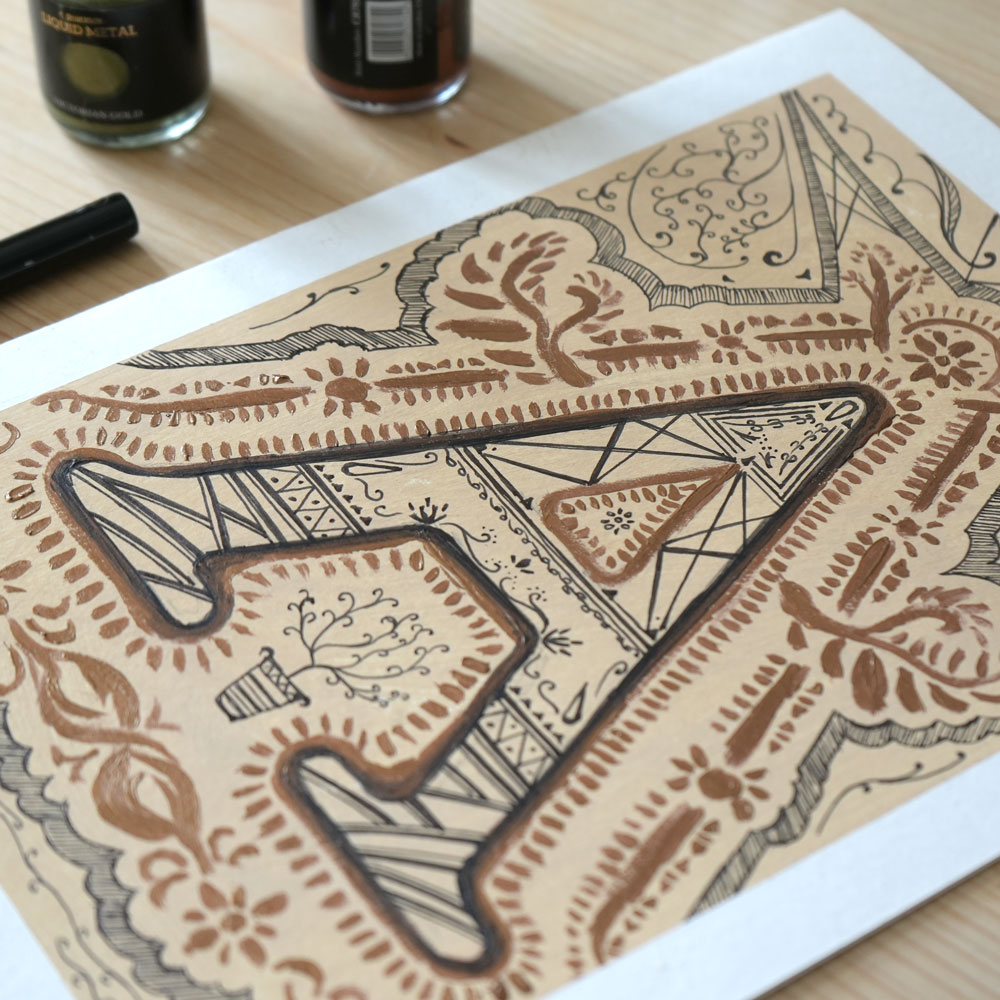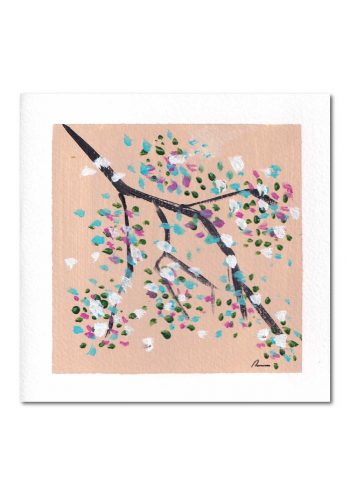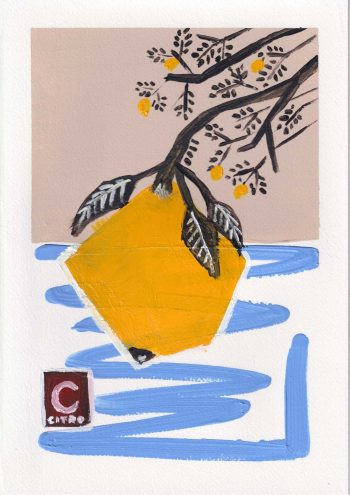This hand-painted piece was inspired by the use of gold in art, fashion, and design in India, part of our Letter greeting card series and painted in rose gold.
Gold with its brilliant lustre and enduring value, holds a special place in Indian art, symbolizing not just wealth but also cultural and spiritual significance. This precious metal has been an integral part of Indian artistry for centuries, weaving its way through various forms of art, from majestic temple architecture to intricate jewellery and beyond.
In India, gold is much more than a precious metal; it’s a part of the country’s soul. It embodies purity, prosperity, and good fortune. This reverence is evident in the multitude of Indian festivals and rituals where gold plays a central role. For instance, during Diwali, the festival of lights, buying gold is considered auspicious, symbolizing the invitation of Lakshmi, the goddess of wealth and prosperity, into one’s home.
Gold’s importance in Indian art can be traced back to ancient times. The Indus Valley Civilisation (circa 2500 BCE), known for its advanced urban planning and sophisticated craftsmanship, produced gold jewellery of exquisite detail. This tradition has been carried forward through the ages, with gold remaining a favourite medium for expressing artistic excellence.
In Indian temple architecture, gold is often used to adorn the domes and idols, reflecting a divine glow that enhances the spiritual ambience. The famous Padmanabhaswamy Temple in Kerala, known for its treasures, is a striking example where gold elevates the spiritual and aesthetic experience.
The art of Indian jewellery, deeply intertwined with gold, showcases the metal’s versatility and beauty. Traditional techniques like Kundan (setting of precious stones in gold), Filigree (delicate metalwork), and Meenakari (enamelling) highlight gold’s malleability and sheen. These methods produce pieces that are not just adornments but also carry deep emotional and cultural significance, often passed down through generations as heirlooms.
Gold also features prominently in Indian paintings and textiles. For example, in Tanjore paintings, gold foil is used to give a rich embossed look, bringing the paintings to life with a divine glow. Similarly, in Indian saris, especially bridal wear, gold thread embroidery known as Zari is a staple, adding elegance and festivity to the attire.
The significance of gold in Indian art is a testament to the metal’s unbreakable bond with Indian culture. It transcends its material value, becoming a medium through which stories of gods, kings, and the common man are told. Its enduring appeal lies in its ability to connect the past with the present, tradition with modernity, making gold an inseparable part of India’s artistic heritage. Through its glow, we see a reflection of India’s age-old civilization, rich in art, culture, and spirituality.









